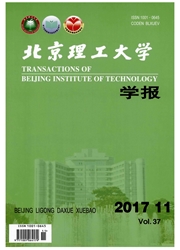

 中文摘要:
中文摘要:
针对地球同步轨道合成孔径雷达在远地点采用原有的等效直线模型速度和斜视角会出现复数,以及"Stop-and-Go"假设不成立的问题,进行了二次距离压缩算法(SRC)的改进,提出了一种新的信号模型,修正了成像算法中的补偿函数,而且采用高阶近似的方法得到了精确的方位向调频率,改进了方位向压缩函数.结果表明改进的二次距离压缩算法可以在合成孔径时间100s内聚焦远地点40km×40km的场景,且场景边缘点的峰值旁瓣比和积分旁瓣比与理论值非常接近.
 英文摘要:
英文摘要:
It is known that computing the right range is very complex in geosynchronous orbit(GEO) synthetic aperture radar(SAR) for the factors that,firstly,the velocity and the slant angle at apogee fitted by the line trajectory model are the complex numbers and,secondly,"Stop-and-Go" assumption will brings about a range error.This paper explores the range issue and proposes a new range mode.It was found that the problem of complex number could be avoided by adopting the norm to express the range and the impacts of "Stop-and-Go" assumption might be considered in the modified range model.Based on the new range model,the expression of two-dimensional echo in frequency domain was deduced and the compensation function in the course of imaging algorithm was improved.Further,an accurate azimuth compression function was modified by means of a high-order chirp rate in azimuth.The result shows that a 40 km×40 km scene can be focused very well under the synthetic aperture time(SAT) of 100 s by the improved secondary range compression(SRC),and the peak side-lobe ratio(PSLR) and integrated side-lobe ratio(ISLR) of the edge points are very near to the theoretical value.
 同期刊论文项目
同期刊论文项目
 同项目期刊论文
同项目期刊论文
 Forecasting the local ionospheric foF2 parameter 1 hour ahead during disturbed geomagnetic condition
Forecasting the local ionospheric foF2 parameter 1 hour ahead during disturbed geomagnetic condition Pulse-order recursive method for inverse covariance matrix computation applied to space-time adaptiv
Pulse-order recursive method for inverse covariance matrix computation applied to space-time adaptiv Extended NLCS Algorithm of BiSAR Systems with a Squinted Transmitter and a Fixed Receiver: Theory an
Extended NLCS Algorithm of BiSAR Systems with a Squinted Transmitter and a Fixed Receiver: Theory an Pre-compensation clutter range-dependence STAP algorithm for forward-looking airborne radar utilizin
Pre-compensation clutter range-dependence STAP algorithm for forward-looking airborne radar utilizin 期刊信息
期刊信息
